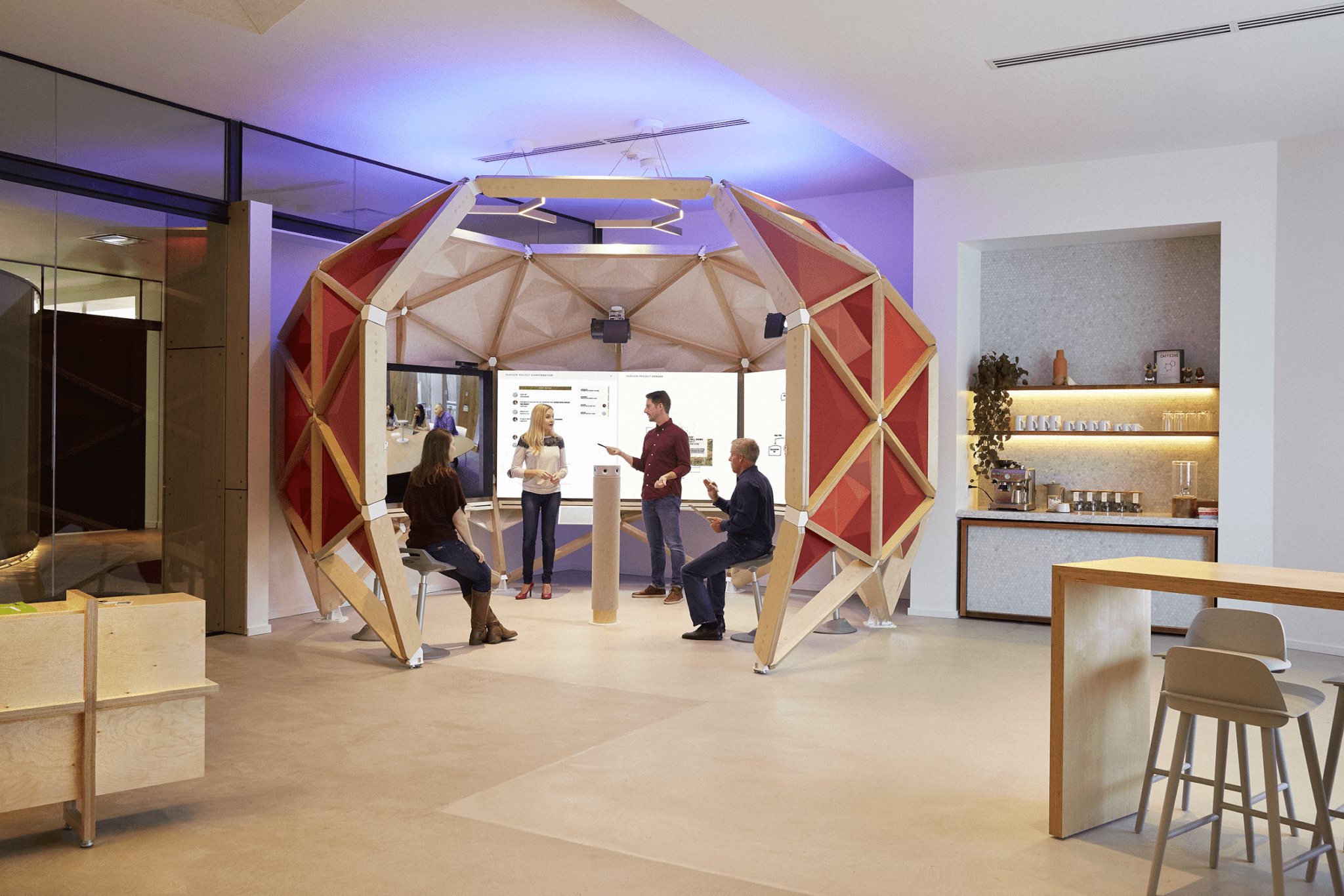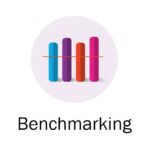What Microsoft is thinking about now – and in the future – and what it tells us

Shared with permission from the Microsoft Envisioning team
Building 33 on the beautiful, peaceful campus of Microsoft’s HQ just outside of Seattle houses a fascinating center of the future of work (and life) and it keeps being freshly reimagined. Under the guidance of Harald Becker, Director of Industry Engagement and Research we toured Microsoft’s Envisioning Center with a dozen senior executives from DWG Member organizations and four members of the DWG team dip into the “mind of Microsoft”. Since this was my third visit to the Center in seven years, it is fascinating to compare and contrast how this facility, dedicated to providing real-life demos of the future three to five years out, is morphing as the digital geography around us evolves. Harald made sure all the leaders from American Express, The Coca-Cola Company, Royal Bank of Canada, UBISOFT, Southwest Airlines, among others understood that the Center is not about “the Microsoft enterprise stack”, so forget Office 365, Teams and SharePoint – this is about how the wider organization thinks, sees and envisages the digital world of work over the next three to five years.
My key takeaways
It strikes me that the Center’s mission is about testing new approaches to improve our current digital workplace experiences. For example, in a remote meeting setting, we will get high definition views of colleagues from many angles so we can sense their mood, tone and presence. Or we will have real-time transcription of everything being said, with AI translating simultaneously on screen in your language of choice. Or the AI layer will search for documents mentioned and produce versions that you can open immediately by voice or by touch. Or actions will be collated and reported back to all attendees in summary moments, with useful and non-intrusive time reminders. Features such as these won’t be just about changing the face of work but they will make our experience of what we have far, far better and richer. The mobile user experience envisaged by the Center is gorgeous, with intelligence providing a simplified, integrated consolidation of everything a person needs to know or do at any particular moment – from “you are close to a cafe selling your favourite coffee – shall we order one to be ready when you arrive?”, to timely reminders of the processes you need to approve (with supporting information to help you decide whether to sign off or not), to notes from colleagues relating to what you are doing this morning. In short, the world as you would curate it, will be displayed in a way that can only be described as beautiful. Sorry, since the Center is under NDA, no pictures were allowed. And then we have all that is left out. The remote meeting could indicate levels of attention, the mood of colleagues, who is behind schedule, quality of contribution. But while such metrics are probably within reach, the Center’s vision is of an ethical digital workplace that delivers intelligent data in a non-intrusive manner”.
What’s changed and what it tells us
My previous tours were far more expansive and, one might say, visionary. Imagine connecting with anyone with expertise anywhere in real time and having their virtual reality appear before you, in full size? Tour a factory in India remotely from your home office in Mexico as if you were there, with data and insights popping up as you move between product lines. What this tells me is that Microsoft is now more about fixing and improving (no bad thing) than stretching our collective imagination. There is much to be said for this vision, as it helps us directly and adds AI to our world in a non-intrusive and human-centred way. The broader visions are great but what about making my life simpler, easier and richer? The general conversation among DWG member executives during the two-day confidential meeting and over dinner was that this a useful trajectory for Microsoft and reflective of the focused work under their CEO Satya Nadella. Following the tour, my one open question was “how does this big picture, system-changing work translate into a way of working that is entirely new, rather than an extension of what already exists?” In reply, Harald Becker was quick to share that “we view the changing world of work as a large wave evolution and transformation rather than replacing the old system with something completely new. The future of work will still have hierarchies and a chain of command. But hopefully that operating model will be extended with a more agile, responsive and outcome/impact-focused way of working – one where we work across ecosystems in more networked and dynamic ways.”
Research and resources
- External article: Microsoft Envisioning Center Innovation Center – Redmond
- Digital Workplace Impact podcast: Human + Machine – with Accenture’s visionary leader Paul Daugherty
- Topical research: Digital Workplace 2030: Preparing now for the digital worlds of work to come
- Expert blog: My 10 digital workplace predictions for 2019
TAKE THE NEXT STEP
Categorised in: Digital workplace technologies, Digital workplace technologies, Future of work, Future of work, Microsoft 365


